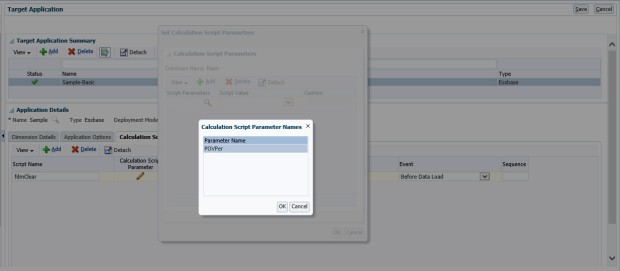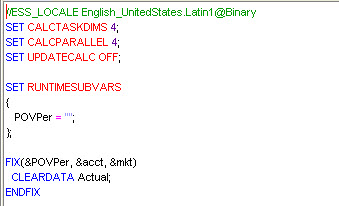This week at Oracle Open World, Oracle has announced more details around a few new EPM Cloud products (Essbase Cloud Services, PCMCS, and DMCS) in addition to their already existing stack of SaaS cloud services (PBCS, EPRCS, EPBCS, ARCS, and FCCS).
 With these new offerings added to their stable, is this the death of on-premises EPM as we know it?
With these new offerings added to their stable, is this the death of on-premises EPM as we know it?
Oracle’s stated direction of product strategy for the EPM products is to tap into unserved business users. EPM has been predominantly used by corporate finance departments from the beginning. At one point, Hyperion was marketed to CFOs and not CIOs because it could be run on an administrator’s computer under a desk without IT involvement. The evolution of EPM cloud is a return to the golden age of Essbase – easily created departmental applications that provide better analytic ability than Excel alone.
The EPM cloud products are really all about allowing easy adoption for non-traditional EPM users and providing rapid value to their customers. Spreadsheets still dominate at small to medium companies. The cloud offerings are really simplify life for those companies who struggle with maintaining servers and have a lack of technical skill at designing an optimized solution. With the EPM cloud products, it’s very easy to roll out a Workforce or CapEx application in EPBCS by sending out the URL and paying the monthly subscription fees. The cloud also allows the business users to be in the driver’s seat by not needing IT resources to get them up and running.
As we know, there is a long way to go yet on the EPM Cloud roadmap to get all of these products working well together. For instance, how exactly do we get data from our EPBCS application into ESSCS for additional reporting? How about my BICS dashboards using data from my ESSCS departmental cube or my PBCS budget data? It’s clear to see that with Oracle’s growth in the cloud and continued development of additional features and functions on the cloud products that these drawbacks will be remedied in time.
This whole cloud thing is just a fad, it will pass, right?
Even Mark Hurd stated during his keynote on Monday that the cloud is no fad, it’s a generational shift that is here to stay. Oracle has stated publicly that they fully intend to continue to support and develop EPM on-premises solutions. Matt Bradley, SVP for EPM and BI Development at Oracle, has said that Oracle expects most companies will enter into a hybrid cloud implementation if and/or when they decide to move their investments into the cloud. They have developed tools in DRM and FDMEE to support these hybrid cloud implementations. The shift to cloud computing is happening, but it doesn’t signal the immediate end of the line EPM on-premises. Once the cloud products have fully matured, there may continue to be valid use cases for on-premises EPM products going forward.
So, what is the future of my on-premises investment?
The market indicates that there is a healthy appetite for cloud solutions and all indications are that Oracle expects even large customers to eventually move their EPM investments to the cloud. While the on-premises products are still being developed, the availability of new on-premises versions has slowed down. For the last few years, we were blessed with several major releases of EPM software from 9.3.1 to 11.1.2.4. Oracle noted that the software release adoption cycle was about every two to three years, so we expect that the new software releases for on-premises will be more in line with those adoption cycles. We should expect to see some new features and functionality through Patch Set Updates to the latest code line in between major upgrades. Future on-premises releases will begin to showcase a simpler architecture to the components and focus on usability.
What should we do with our on-premises EPM environments now?
If you haven’t already upgraded to version 11.1.2.4, it is highly recommended. The 11.1.2.4 code line has some great features like better support for Essbase Hybrid Aggregation, improvements in HFM consolidations, FDMEE data synchronization between EPM applications, and the new Financial Reporting Web Studio. I have been on several calls with customers who are still working in old releases and the Classic Essbase add-in. It is time to move on and update those environments. If you have upgraded to version 11.1.2.4, it’s highly recommended to keep up with the latest Patch Set Updates on at least a quarterly basis. Sometimes applying the latest patches may cause some issues, so thorough testing of new patches is always recommended before implementing into production.
Staying on the latest release also allows companies to bridge from on-premises to cloud much easier. For example, as mentioned earlier FDMEE and DRM already support hybrid cloud implementations. Oracle has doubled-down at OOW 2016 on their assertion that cloud computing is the future. While on-premises EPM software isn’t going away any time soon, the cloud products are going to continue to mature rapidly. As the cloud products develop and integrations between them become more defined, more and more companies are going to see the benefits of moving their EPM investments into the cloud.








